Step 2: Activate Edge Solo Microphone
Log in and access your user dashboard. Click "Activate New Device", then select "Edge Solo" and enter it's
serial number.
Assign the mic emulations to your device (The Orion Studio Synergy in this example):
a) Open the Antelope Launcher application on your computer and log in your Antelope account with your credential;
b) On the ''Devices'' page click on ''Manage Device'' button underneath your "DEVICE ID":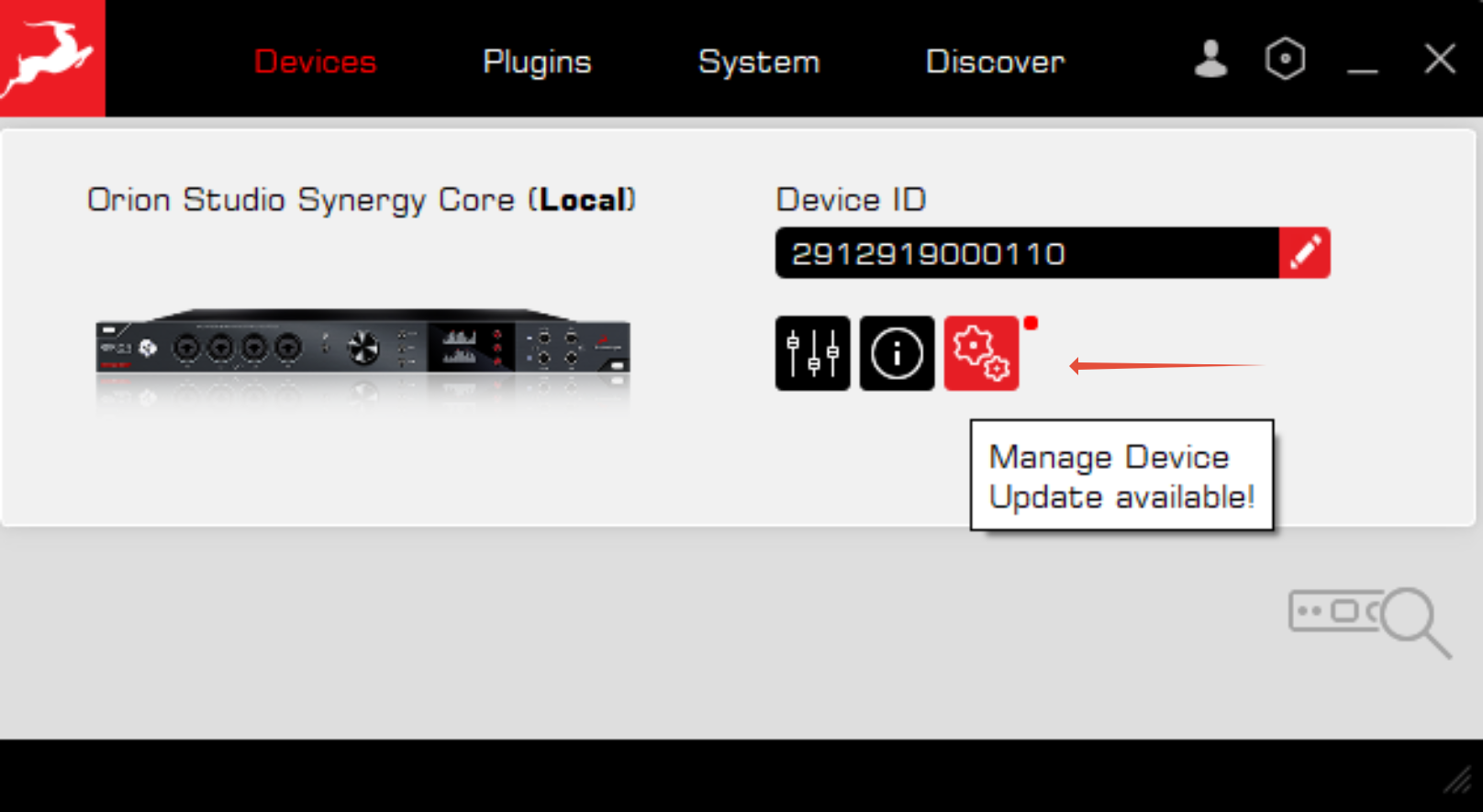 c) Click on "Features & Ownership".
c) Click on "Features & Ownership". d) Put a check on the Edge Solo Mic Emulations' checkbox as shown in the picture below and click on "Apply" after:
 Step 4: Connecting the Mic
Step 4: Connecting the Mic
Use a standard XLR to XLR cable to directly connect the Edge Solo Microphone to any XLR input on the Orion Studio Synergy Core.
Step 5: Phantom Power Activation and Emulation Access
Open Orion Studio's software control panel. Engage the 48V phantom power by pressing the "48V" button on the input the microphone is connected to. To access the Edge Solo Mic Emulations, click the on the “Mic” icon (pointed with the red arrow below):

Now in the dropdown menu select "Edge Solo". A new window will appear on the right. From there by clicking on the dropdown menu you will be able to select any microphone emulation you would like to use during recordings.
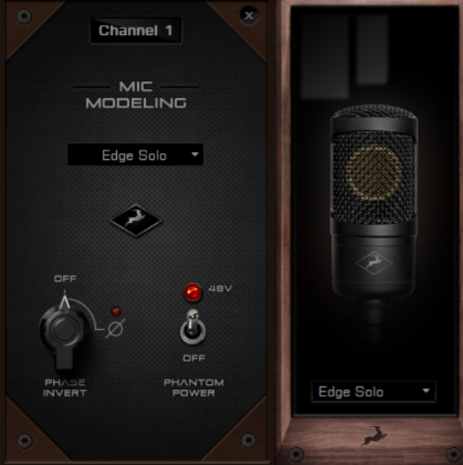
Step 6: Efficient Routing
Route the emulated input signal to be record in your DAW or to monitor it.
When a microphone emulation is being selected on the preamp, the microphone is connected to, the processed signal with the applied emulations will be routable via the EMU MIC boxes in the routing matrix.

For example, if the microphone is connected to Preamp 5 and you have applied mic emulation on this channel, the processed input audio will be on EMU MIC channel 5.
After that you can route EMU MIC channel 5 to "Comp Rec" channel 5 to record it in your DAW.
To monitor the processed input signal with the applied mic emulation route EMU MIC channel 5 to a summing mixer by choice or route the channel directly to an output of choice.
* For user using: Zen Go SC USB, Zen Go SC TB, Zen Q SC USB, Zen Q SC TB, Zen Quadro SC, Discrete 4, Discrete 4 SC, Discrete 4 Pro SC, Discrete 8, Discrete 8 SC or Discrete 8 Pro SC - the same logic applies for these interfaces as well.
1. Connect the Edge Solo microphone to an XLR input of your interface by choice.
2. Pair the Mic Emulations with your interface from Manage Device -> Features & Ownership section in the Antelope Launcher once you log in your Antelope account.
3. Run the software control panel of your interface and turn on the phantom power of the used mic input.
4. Click on the mic icon and select the Edge Solo from the dropdown menu.
5. Apply a mic emulation by choice from the lower-right dropdown menu.
6. Select "MONITOR/HP1" mixer in your interface's software control panel. Instead of selecting the used preamp with applied emulations as "Preamp X" in the mixer, select it as "EMU MIC X", where "X" is the input your microphone is using.
7. After that record the EMU MIC X into your DAW. If EMU MIC X is the first channel in your mixer, select "In 1" in your DAW.
8. To monitor the EMU MIC X with the applied emulations, simply switch between different mixers "MONITOR/HP1"/"HP2"/"LINE OUT" and turn the fader of EMU MIC X up.


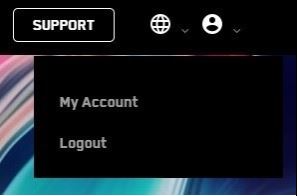



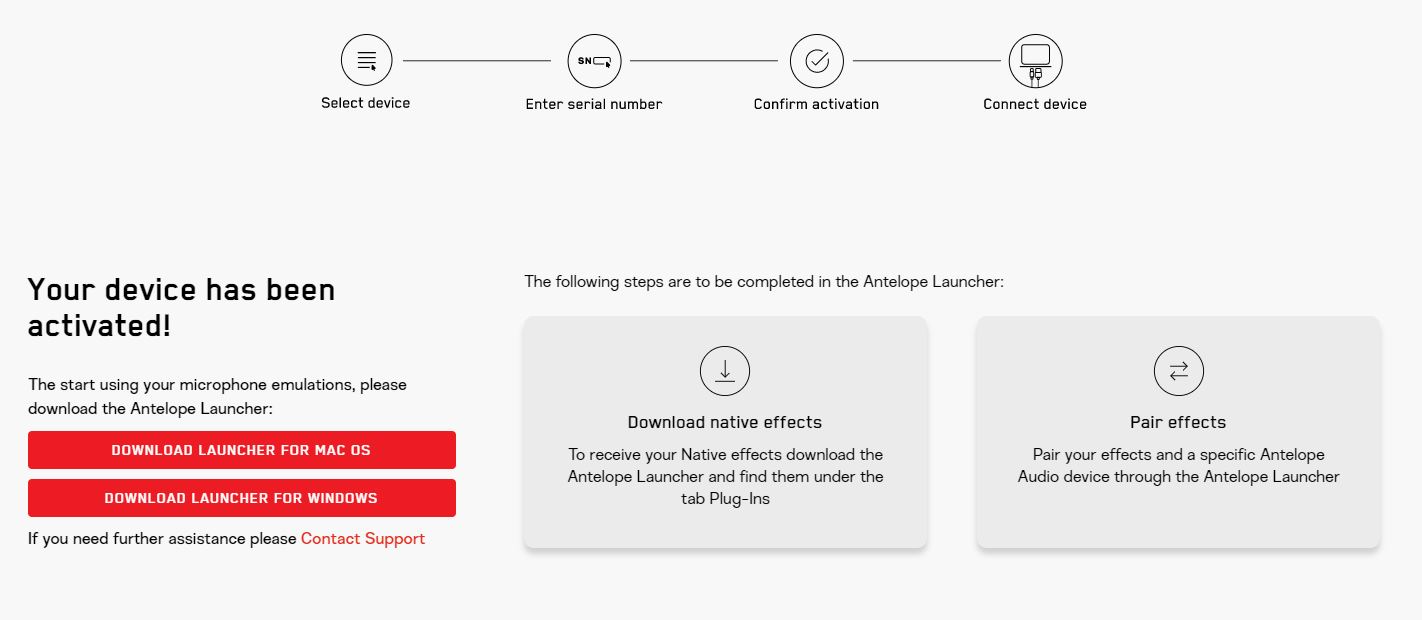




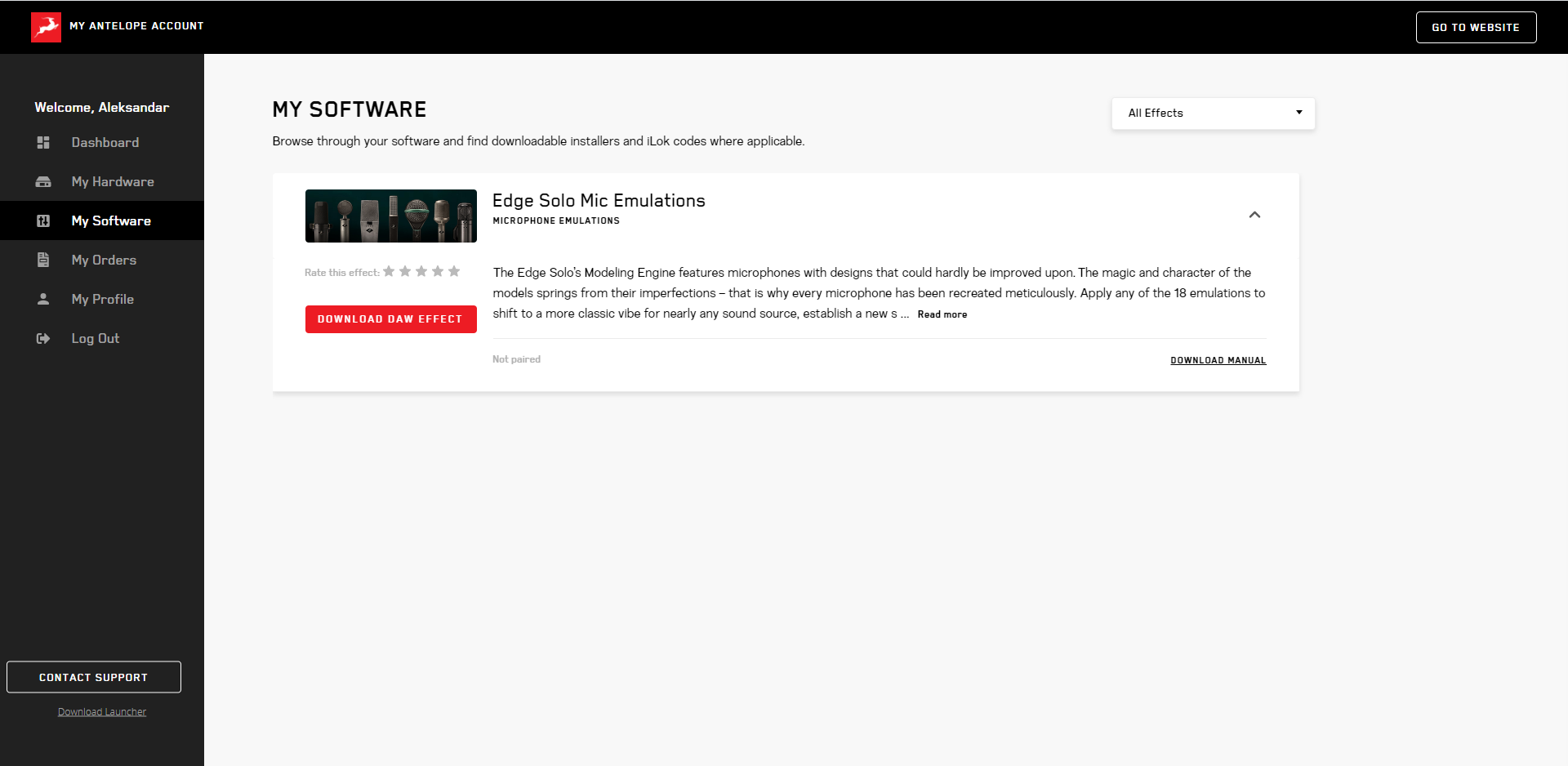



 c) Click on "Features & Ownership".
c) Click on "Features & Ownership".


